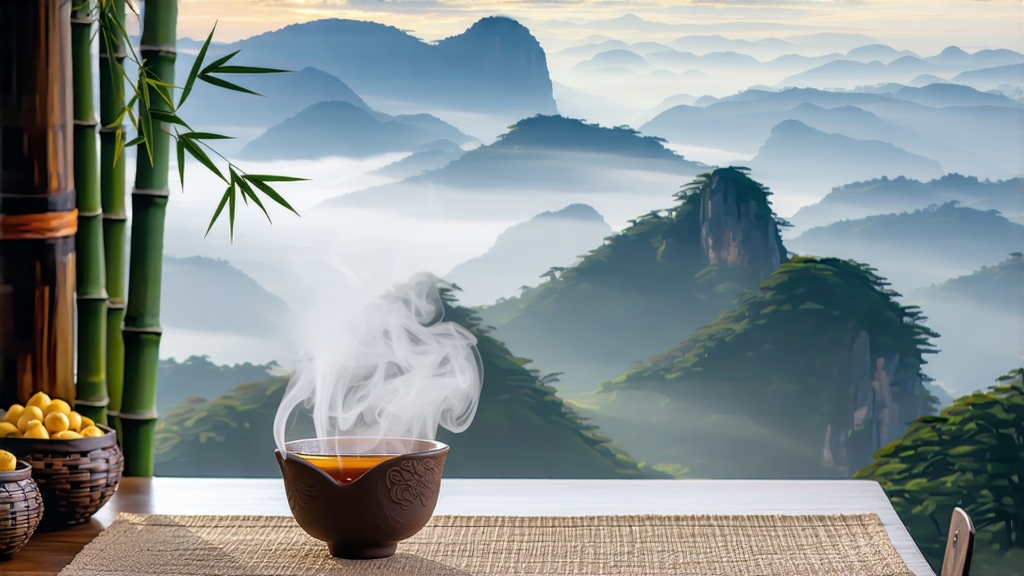
Tucked high in the mist-veiled Dabie Mountains of western Anhui Province, Huoshan Huangya has quietly embodied the elegance of China’s least-understood tea category for more than fourteen centuries. While green tea commands global fame and pu-erh dominates investment portfolios, yellow tea—huang cha—remains a whispered legend even inside China. Among the three authenticated historic yellow teas (the others being Junshan Yinzhen of Hunan and Mengding Huangya of Sichuan), Huoshan Huangya is the only one still produced entirely by hand within its original micro-appellation, a 36-square-kilometer core zone where altitude, humidity, and mineral-rich quartz soil converge to create a leaf that is literally golden. International drinkers who encounter it for the first time often describe the liquor as “liquid warm sunshine,” a sensory metaphor that captures both the color and the mellow, chestnut-sweet aroma that lingers like late-afternoon light.
Historical records first name the tea during the Tang dynasty (618-907 CE) when local monks at the Bamboo Forest Temple offered it to the traveling Emperor Li Shimin. By the Ming dynasty it had become an imperial tribute, carried 1,200 km north to Beijing along the same post-roads used for salt and silk. Legend claims that the Kangxi Emperor so favored the tea that he exempted Huoshan county from grain taxes during years when frost damaged the early-spring buds. Yet the 20th century brought near extinction: civil war, Japanese occupation, and the Cultural Revolution disrupted mountain gardens, and by 1972 only 0.8 mu (about 530 m²) of ancient bushes remained. A state-led restoration project in 1979 located three 300-year-old mother trees, took cuttings, and re-established 2,100 mu of gardens by 1985. Today the tea is once again reserved for state banquets, but small surpluses reach specialty exporters willing to navigate the mountain’s single narrow access road.
Botanically, Huoshan Huangya belongs to the small-leaf landrace Camellia sinensis var. sinensis ‘Huoshan Jiuya.’ The cultivar is distinguished by an unusually high ratio of bud to first leaf—typically 1:0.7—giving the finished tea its signature “sparrow-tongue” shape. Picking occurs during a ten-day window around Qingming festival when each bud reaches 15–20 mm but has not yet unfurled. A skilled picker can harvest only 400 g of fresh material per hour; 46,000 buds are required for one liang (50 g) of dry tea. The mountain’s diurnal temperature swing of 12 °C during this period slows photosynthesis, concentrating amino acids—especially L-theanine—so that the tea delivers a brothy umami rarely found outside high-grade gyokuro.
The hallmark of yellow tea is menhuang, a controlled post-oxidation unique within the tea lexicon. After a brief withering under shade cloth, the buds are wok-fired at 160 °C for exactly 3.5 minutes; this kills the leaf enzymes that would otherwise drive full oxidation toward black tea. While still at 50 °C, the semi-brittle buds are stacked in oak trays and wrapped in steamed hemp cloth for 48 hours. During this “sweating” phase residual moisture and heat re-activate mild enzymatic browning, turning the leaf tips a pale primrose and developing the characteristic cocoa-butter note. Master Huang Guohua, fifth-generation inheritor of the technique, judges readiness by pressing a bud between his index and middle finger: “When the spine cracks but the skin does not separate, the leaf has agreed to become yellow.” A final low-temperature drying over embers of local bamboo reduces moisture to 5 % while imparting a faint toasted-rice sweetness.
Western tea science is only beginning to decode menhuang. A 2021 paper in the Journal of Agricultural and Food Chemistry identified a novel flavonoid—6,8-di-C-β-D-glucopyranosylapigenin—that forms exclusively during the 48-hour sweat and correlates with the tea’s luminous yellow infusion. The same study measured GABA levels at 278 mg per 100 g, triple that of dragon-well green tea, suggesting potential anxiolytic effects. Yet the process remains stubbornly artisanal; attempts to mechanize the wrapping stage have yielded dull, olive leaves lacking the signature “three yellow